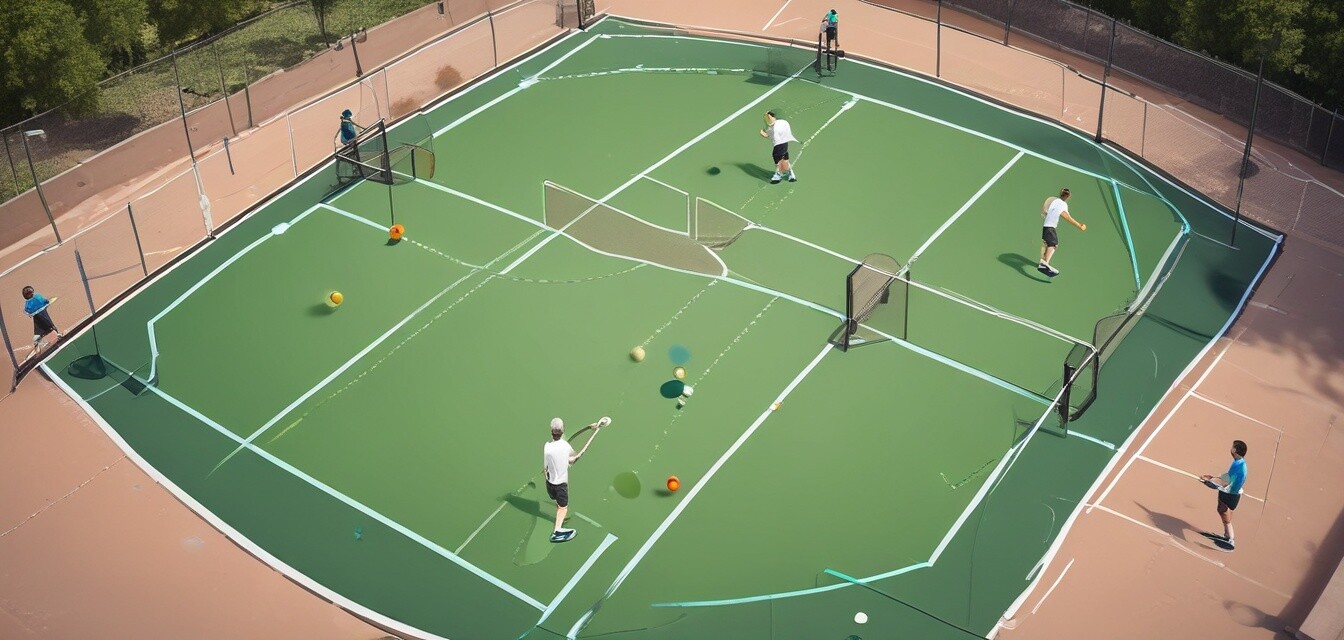
Understanding the Basics of Pickleball Strategy
Key Takeaways
- Understand the importance of court positioning and movement.
- Utilize effective shot selection to control the game.
- Master communication with your partner in doubles play.
- Be aware of your opponent's weaknesses.
- Practice developing a solid serve and return strategy.
Playing pickleball goes beyond just hitting the ball over the net; it requires insight into strategic play. Whether you’re just starting or looking to enhance your expertise, understanding the fundamentals of pickleball strategy can elevate your performance on the court. In this article, we will delve into several core tactics that can significantly influence your game and lead you toward victory.
1. Court Positioning
Effective court positioning is vital in pickleball. Proper placement can enhance your defensive and offensive strategies. Here are fundamental positioning strategies to consider:
| Position | Strategy |
|---|---|
| At the Kitchen Line | Maintain a close distance to reduce your opponent’s shot options. |
| Deep in the Court | Prepare for powerful shots and give yourself time to react. |
| Side Positioning | Spread out with your partner to cover more ground and angles. |
2. Shot Selection
Different shots serve various purposes in pickleball, and choosing the right one can change the game dynamics. Here’s an overview of essential shot types and their purposes:
- Dinks: Soft shots played near the net, useful for confusing opponents.
- Groundstrokes: Base-line shots that establish control from a distance.
- Volleys: Shots taken before the ball bounces, allowing you to dictate the pace.
- Serves: An effective serve can put immediate pressure on your opponents.
3. Playing Doubles: Communication is Key
In doubles play, successful teams thrive on strong communication. Here are some strategies to improve coordination with your partner:
- Designate roles based on strengths (e.g., net player vs. baseline player).
- Use signals for shot selection and movement during rallies.
- Encourage positive reinforcement during the game.
- Discuss strategies and adjustments between points.
4. Analyzing Opponents
Understanding your opponent’s strategies and weaknesses can offer a significant advantage. Focus on these tactics:
| Observation | Strategy |
|---|---|
| Weak Backhand | Target this side with every opportunity. |
| Slow Reaction Times | Use fast-paced shots and volleys. |
| Poor Net Play | Engage in more drop shots and dinks. |
5. Developing a Serve and Return Strategy
A strong serve sets the tone for the rest of the rally. Consider these tips to improve your serve and return:
- Practice various serve types (topspin, flat, slice) to keep opponents guessing.
- Focus on accuracy rather than power; aim for the corners of the service box.
- Employ consistent routines before serving to build rhythm.
- When returning, anticipate the serve type and prepare your shot early.
Pros
- Improved gameplay and court awareness.
- Enhances teamwork in doubles.
- Increases chances of winning matches.
Cons
- May require time to develop strategic thinking.
- Overthinking can disrupt natural gameplay.
Conclusion
Understanding and applying these basic strategies can dramatically boost your pickleball skills and enhance your enjoyment of the game. Focus on your court positioning, shot selection, and effective communication with partners, while also learning to analyze your opponents. These tactics will provide a solid foundation to elevate your pickleball performance. For more tips on improving your skills, check out our other tips and tactics articles in our Tips & Tactics section!


